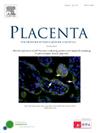呼吁规范胎母界面处人胎膜的命名
IF 2.5
2区 医学
Q2 DEVELOPMENTAL BIOLOGY
引用次数: 0
摘要
尽管是表面积最大的子宫内组织之一,但在临床和基础科学研究中,排列在子宫腔内的胎儿膜经常被忽视、遗忘或错误识别。胎母界面由胎膜(胎儿成分)和顶叶蜕膜(母体成分)组成,它们排列在宫腔内,为维持妊娠提供必要的机械、免疫、激素和运输支持。胎膜通过复杂的信号级联反应在触发和调节产程中起着重要作用。虽然一些研究人员已经在世界范围内对膜进行了研究,但命名法仍然不一致,导致涉及科学、生物工程和生殖医学的跨学科学科普遍存在歧义。关于其术语、起源、结构和功能的持续混淆导致了几个重大问题,包括临床诊断错误和错误陈述,科学研究中的局限性和不准确性,以及监管和临床沟通不畅。因此,胎儿膜学会(FMS)呼吁该领域标准化胎儿膜命名法,定义其结构,并总结其区域特异性差异,以促进对其生物学作用的理解。清晰和一致的胎儿膜鉴定对于提高研究准确性、临床结果以及医学和科学界内部和之间的有效沟通至关重要。本文章由计算机程序翻译,如有差异,请以英文原文为准。
A call to standardize the nomenclature of human fetal membrane at the feto-maternal interface
Despite being one of the largest intrauterine tissues in surface area, the fetal membrane that lines the intrauterine cavity is often overlooked, forgotten, or misidentified in clinical and basic science research. The feto-maternal interface is comprised of the fetal membrane (fetal component) and decidua parietalis (maternal component), which lines the intrauterine cavity and provides essential mechanical, immune, hormonal, and transport support to maintain pregnancy. Fetal membrane plays an important role in triggering and regulating labor via complex signaling cascades. Whilst several researchers have investigated the membranes world-wide, nomenclature remains inconsistent, leading to widespread ambiguity across inter-disciplinary disciplines involving science, bioengineering, and reproductive medicine. The ongoing confusion regarding its terminology, origins, structure, and function has resulted in several significant issues, including diagnostic errors and misrepresentation clinically, limitations and inaccuracies in scientific research, and regulatory and clinical miscommunication. Therefore, the Fetal Membrane Society (FMS) calls upon the field to standardize fetal membrane nomenclature, define its architecture, and summarize its region-specific differences to facilitate understanding of its biological role. Clear and consistent identification of the fetal membrane is essential in improving research accuracy, clinical outcomes, and effective communication within and between the medical and scientific communities.
求助全文
通过发布文献求助,成功后即可免费获取论文全文。
去求助
来源期刊

Placenta
医学-发育生物学
CiteScore
6.30
自引率
10.50%
发文量
391
审稿时长
78 days
期刊介绍:
Placenta publishes high-quality original articles and invited topical reviews on all aspects of human and animal placentation, and the interactions between the mother, the placenta and fetal development. Topics covered include evolution, development, genetics and epigenetics, stem cells, metabolism, transport, immunology, pathology, pharmacology, cell and molecular biology, and developmental programming. The Editors welcome studies on implantation and the endometrium, comparative placentation, the uterine and umbilical circulations, the relationship between fetal and placental development, clinical aspects of altered placental development or function, the placental membranes, the influence of paternal factors on placental development or function, and the assessment of biomarkers of placental disorders.
 求助内容:
求助内容: 应助结果提醒方式:
应助结果提醒方式:


